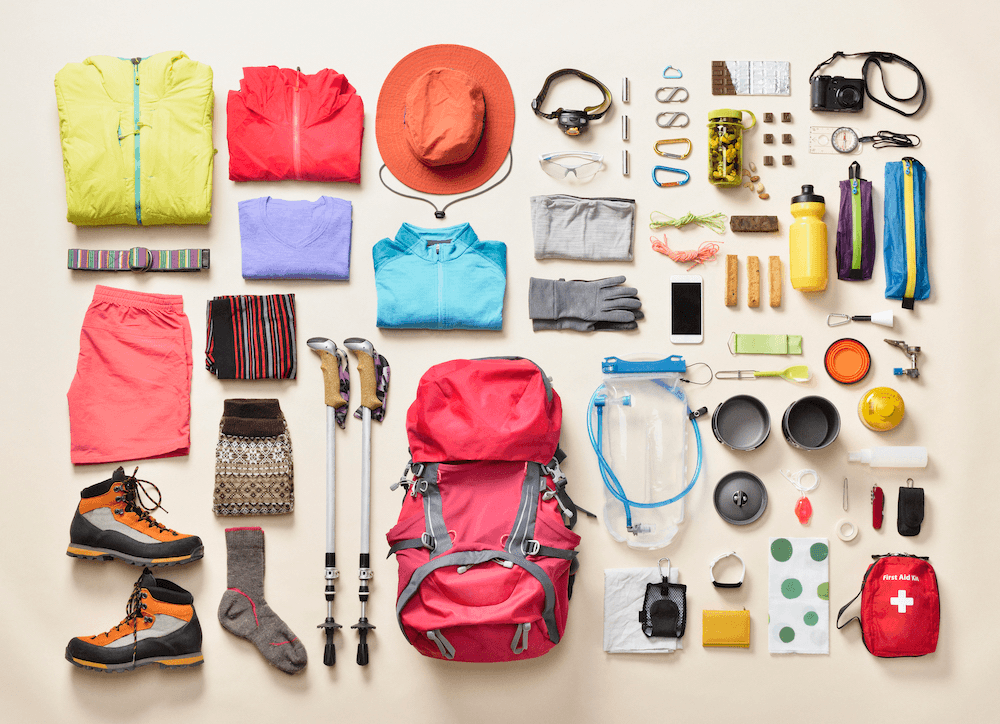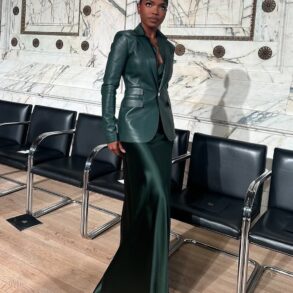Is wearing tramping clothes a way of reckoning with the climate crisis?
If you don’t know what gorpcore is, you’ve probably been wondering why everyone cool, including Bella Hadid, Kendall Jenner and A$AP Rocky, has started wearing tramping clothes, or why clothes not in outdoors shops have sprouted elastic toggles, millions of pockets, buckles and fleece.
Gorp is an acronym for good ol’ raisins and peanuts, which North Americans use to mean scroggin. Gorpcore was coined in 2017 by New York magazine The Cut to describe the phenomenon of outdoor technical apparel – element-braving fleeces, windbreakers, puffer jackets, tramping shoes – being worn in cities, as fashion, paired with streetstyle aesthetics like baggy silhouettes and denim. Clothing usually sequestered to the depths of the forest, or the tips of mountains – practical, dorky, even ugly – is cool now.
While it’s not exactly new (it was a decade ago when Tevas and Birkenstocks really kicked off again and moved from National Parks to the city), gorpcore just keeps going. The micro-trend seems to have become a mainstay as its aesthetics have trickled from actual outdoors brands like The North Face, Patagonia and Columbia, to high end fashion houses like Gucci, Miu Miu and Comme des Garçons, all the way down to New Zealand’s fast fashion outlets like Cotton On, Glassons and Hallensteins. The trendiest gorpcore pieces exaggerate utilitarian features – puffer jackets are huge, there’s so many elastics and straps it’s confusing, and bold colours once used for accents dominate.
Critical and cultural theorist Ciara Cremin, from the University of Auckland Sociology department, wishes we didn’t love gorpcore. “Tramping clothing becoming a fashion – it makes me shudder,” she says. In some ways, she finds the practical aesthetic regressive. Gorpcore is presented as being gender neutral, but “it’s clothing that men can comfortably wear, in other words, clothing not associated with women. We don’t present dresses as gender neutral, it’s always a pair of pants.”
Cremin says clothing makes statements, and signifies to others who we are “whether we recognise it or not.” She is all for using clothing to “draw out our differences and to offer the world something to feel joyous about.” Instead of practicality celebrated as aesthetic, she prefers flourishes, excesses, beauty and colour, and is known to always have a bright manicure. Sadly, “New Zealand is a society that celebrates its own banality, and there’s nothing more banal than looking like you’re going to go on a tramp.”
People on these beautiful bushy isles seem particularly susceptible to gorpcore – we love to think we’re good at outdoor adventures and also cool. On any of the Queen Streets around the country, babies are wearing miniature puffer vests, zoomers are shrouded in parachute pants and pockets, millennials are carrying little bags made out of Siliconized Ballistic ripstop nylon, and boomers are wearing high performance sneakers.
Why, for a stroll down the main strip, are we choosing clothing which, not that long ago, we would cringe at when white middle-class dads wore it on the weekend?
It’s hard not to reach for the climate crisis as an answer. As it’s becoming increasingly obvious and impossible to ignore that humans have fucked it, we’ve come to love nature as we observe its death throes. Covid lockdowns accelerated the romance – we went for walks, took the time to look closely at the patterns on tree trunks and feel the textures of leaves – and it felt good. On Tuesday, researchers from the University of Auckland published a study proving what we’ve all been feeling in our hearts: during the pandemic, more New Zealanders became concerned about the environment, and more developed aspirations for a greener future.
The zips, pockets, cushioned soles and soft vests signal a set of values, as do brand logos (especially Patagonia, though it’s also the uniform of choice for men in their late 20s who still have their learners licence). The appeal surely isn’t entirely in our heads. While it doesn’t challenge masculinity, gorpcore is comfy. Having cosy clothes be not only normal but cool, is pretty nice, especially for women who so often are asked to sacrifice comfort for looks. Once you’ve worn cushy sneakers, it’s hard to go back to strappy platform sandals.
But gorpcore has taken tramping clothing to the extreme. No one tramps in a puffer jacket that big. Vogue Business has claimed that clothes are being designed for the climate of tomorrow, and for the apocalypse, and I can see what they mean. Gorpcore wearers look like they are prepared for an extreme weather event to hit, and/or society collapsing and the city they live in crumbling. Their oversized puffer jackets will protect them from hypothermia, their nylon bags could collect drinking water, and shards of glass to use as protection and food preparation could be stored in their many pockets as they survive in the ruins of the city. As much as gorpcore can be an ode to loving nature, it also seems like an expression of climate anxiety.
For Cremin, it’s not a helpful gesture. “People can wear tramping clothes if they want. But if they’re trying to signal something political in it, or make some statement about ecology, then I think they’re trapped in some kind of delusion,” she says. “There’s no going back to nature. In fact, if we were to embrace nature in this simplistic way, there’d be catastrophe and people would starve. I’m all for preserving nature, protecting nature, and even expanding the spaces where nature can flourish, and so forth. But we need to be careful about fetishising nature.”
“Human life created the problem of catastrophic climate change, and only human life can address the problem.” For Cremin, dressing like we’re into nature seems like a token gesture of the middle-classes. Instead of going tramping, gawping at scenery or listening to birdsong, Cremin says “we need to return back to the fundamental problems of capitalism, and find ways to transform our society.”
The fashion industry is, like the rest of capitalism, fundamentally destructive. In recent years its environmental impacts and exploitation of workers has reached headlines and mainstream knowledge. It’s likely that we’re already bored of the usual response of introducing “eco-conscious” lines and “ethical” options. Perhaps, gorpcore is a new and fashion-specific approach to greenwashing, another way for aesthetics to take the place of real change. Our desire to be in nature, and concern about the climate crisis, is being sold to us – now in technical, synthetic materials which have high environmental impacts, and will outlive the trend by centuries.
This post was originally published on this site be sure to check out more of their content.






